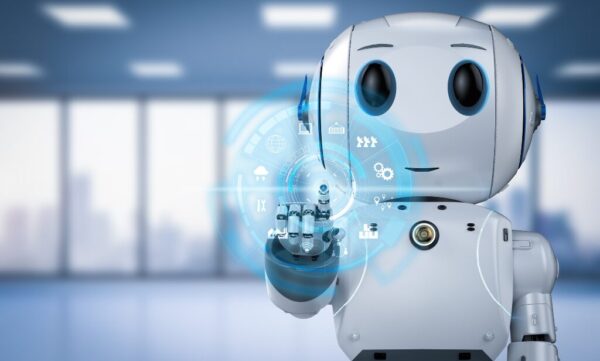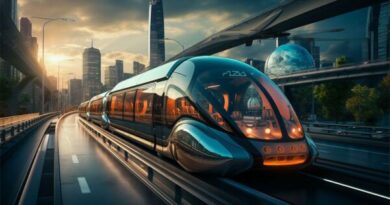The Future is Here: The Transformative Power of Robotics and Automation
Robotics and automation have made remarkable strides, significantly influencing numerous industries and everyday life. From streamlined manufacturing processes to intelligent personal assistants, these technologies are redefining how we work and live. Let’s dive into the fascinating world of robotics and automation and explore their groundbreaking potential.
Revolutionizing Industry: The Rise of Smart Robots
Industrial robots have long been integral to manufacturing, but today’s robots are far more advanced and versatile. With cutting-edge sensors, AI, and machine learning capabilities, contemporary robots perform complex tasks with exceptional accuracy and speed. These robots go beyond repetitive tasks to handle detailed assembly processes, quality checks, and even collaborative operations alongside human workers.
Collaborative robots, or cobots, are particularly significant. Unlike traditional robots that operate in isolation, cobots work directly with human counterparts, boosting productivity and safety. These robots assist with tasks such as material handling, assembly, and packaging, allowing humans to concentrate on strategic and creative endeavors.
Automation: Enhancing Efficiency and Productivity
Automation complements robotics by enabling processes to run smoothly without human intervention. In the corporate world, automation tools are transforming operations, from customer service to data management. AI-powered chatbots and virtual assistants can handle customer queries, process transactions, and provide personalized recommendations, enhancing efficiency and customer satisfaction.
In logistics, automation optimizes supply chains, reduces errors, and accelerates delivery times. Autonomous drones and self-driving vehicles are increasingly prevalent, managing tasks like inventory control, transportation, and last-mile delivery. These technologies not only improve efficiency but also cut costs and enhance the overall customer experience.
Healthcare Innovation: Robotics and Automation in Medicine
The healthcare sector is experiencing a revolution driven by robotics and automation. Surgical robots, for instance, facilitate minimally invasive procedures with unprecedented precision. These robots assist surgeons in performing delicate operations, leading to shorter recovery times and fewer complications.
Automation is also revolutionizing diagnostics and patient care. AI-driven diagnostic tools can analyze medical images and data, aiding doctors in early and accurate disease detection. Automated hospital systems manage patient records, streamline administrative tasks, and ensure timely medication delivery, allowing healthcare professionals to focus on patient care.
Everyday Integration: Robots as Personal Assistants
Robotics and automation are increasingly becoming part of our daily routines. From smart home devices that automate chores to robotic vacuum cleaners maintaining cleanliness, these technologies enhance convenience and improve our quality of life.
Personal robots, equipped with AI-driven assistants, are becoming more advanced and accessible. These robots can manage schedules, provide reminders, control smart home devices, and offer companionship. As AI technology advances, personal robots’ capabilities will expand, making them invaluable in our everyday lives.

Ethical and Societal Considerations:
While the advantages of robotics and automation are clear, their widespread adoption raises important ethical and societal questions. Issues such as job displacement, data privacy, and the ethical use of AI must be addressed to ensure a balanced technological future.
Job displacement is a major concern, as automation may render some jobs obsolete. However, it also creates opportunities for new roles requiring advanced skills. Governments, educational institutions, and businesses must collaborate to offer training programs that prepare workers for future jobs.
Data privacy and security are crucial, especially as robots and automated systems collect and process vast amounts of personal information. Establishing robust regulations and standards to protect privacy and ensure responsible data use is essential.
Conclusion: A Balanced Technological Future
Robotics and automation are transforming our world at an incredible pace, offering endless opportunities for innovation across various sectors. As we continue to integrate these technologies into our lives, it is vital to address the associated challenges and ensure equitable benefits. By fostering a culture of continuous learning and ethical responsibility, we can fully harness the potential of robotics and automation to create a more efficient, inclusive, and bright future. The future is automated, and it’s already here.
FAQs:
1. What exactly are robotics and automation?
Robotics involves the design, construction, and operation of robots—machines programmed to perform tasks autonomously or with human guidance. Automation, on the other hand, refers to the use of technology to execute processes without human intervention, ranging from simple tasks to complex operations controlled by advanced algorithms.
2. How do robotics and automation complement each other?
Robotics provides the physical platforms (robots) capable of executing tasks, while automation encompasses the systems and technologies that control and coordinate these tasks. Together, they enhance productivity, precision, and efficiency across various industries.
3. Which industries benefit most from robotics and automation?
Industries such as manufacturing, healthcare, logistics, agriculture, and even entertainment benefit significantly from robotics and automation. These technologies streamline operations, reduce costs, improve safety, and enable new levels of innovation and scalability.
4. What are collaborative robots (cobots) and their role in workplaces?
Collaborative robots,often referred to as cobots, represent a new wave in automation technology. Unlike their predecessors, which were often isolated behind safety cages, cobots are designed to work alongside humans in shared workspaces. Equipped with advanced sensors and artificial intelligence, these robots can safely interact with human workers, making manufacturing processes more productive and flexible.
5. What ethical considerations surround robotics and automation?
Ethical concerns include potential job displacement, data privacy risks associated with AI and machine learning, and the ethical use of automated decision-making processes. Addressing these concerns requires thoughtful regulation, transparency, and a commitment to responsible innovation.
6. How does automation impact everyday life?
Automation permeates daily life through smart home devices, automated customer service interactions, robotic vacuum cleaners, and AI-driven personal assistants. These technologies simplify tasks, enhance convenience, and improve overall quality of life.
7. Can robots completely replace human workers?
While robots excel in repetitive, precise tasks, they are unlikely to replace human workers entirely. Instead, they complement human capabilities, allowing humans to focus on creative, strategic, and interpersonal aspects of work that require empathy and nuanced decision-making.
8. What skills are essential for careers in robotics and automation?
Careers in robotics and automation demand skills in robotics engineering, computer science, programming, AI and machine learning, mechanical design, and data analytics. Strong problem-solving abilities and a passion for innovation are also critical.
9. How can businesses effectively integrate robotics and automation?
Businesses can start by identifying processes suitable for automation, investing in scalable robotics solutions, training employees to work alongside robots, and ensuring cybersecurity measures to protect automated systems and data.
10. What are the future trends in robotics and automation?
Future trends include advancements in AI-driven robotics, increased adoption of autonomous systems in transportation and logistics, robotics in healthcare for surgeries and patient care, and continued innovation in human-robot collaboration technologies.
11. How does automation impact data privacy and security?
Automation involves the collection and processing of vast amounts of data. Protecting data privacy and security requires robust cybersecurity measures, adherence to regulations like GDPR, and ethical practices in data handling and storage.
12. What risks are associated with robotics and automation?
Risks include job displacement due to automation, cybersecurity vulnerabilities, ethical dilemmas in AI decision-making, and potential socioeconomic impacts. Proactive risk management and ethical considerations are essential to mitigate these challenges.
13. What role does AI play in advancing robotics and automation?
AI enhances robotics and automation by enabling machines to learn from data, make decisions autonomously, and adapt to changing environments. AI-driven advancements include predictive maintenance, personalized customer experiences, and autonomous navigation in complex environments.
14. How can robotics and automation revolutionize healthcare?
In healthcare, robotics and automation enhance surgical precision, automate routine tasks like medication dispensing and patient monitoring, improve diagnostic accuracy through AI-driven analysis of medical data, and support aging populations with robotic assistants for daily living activities.




